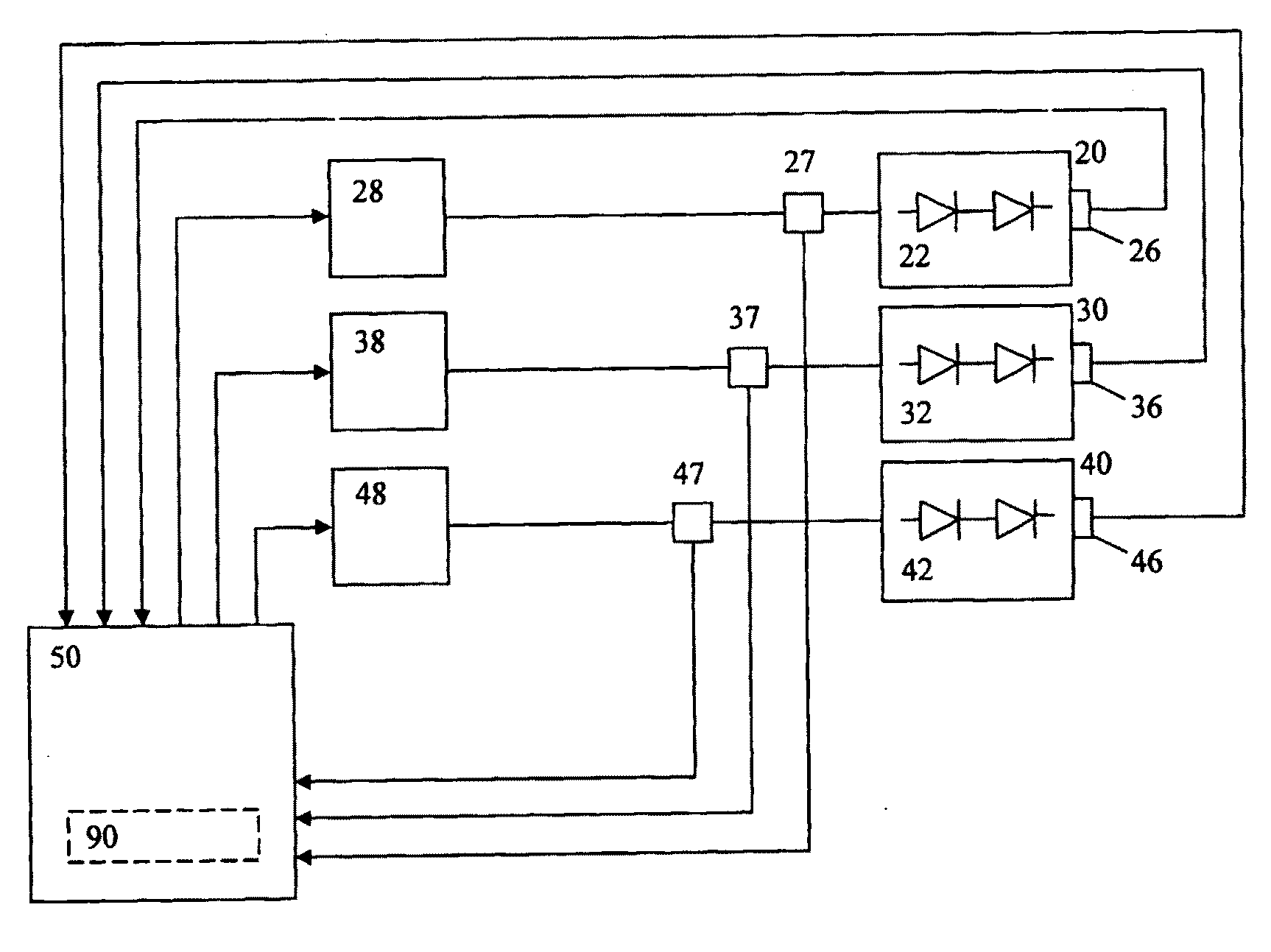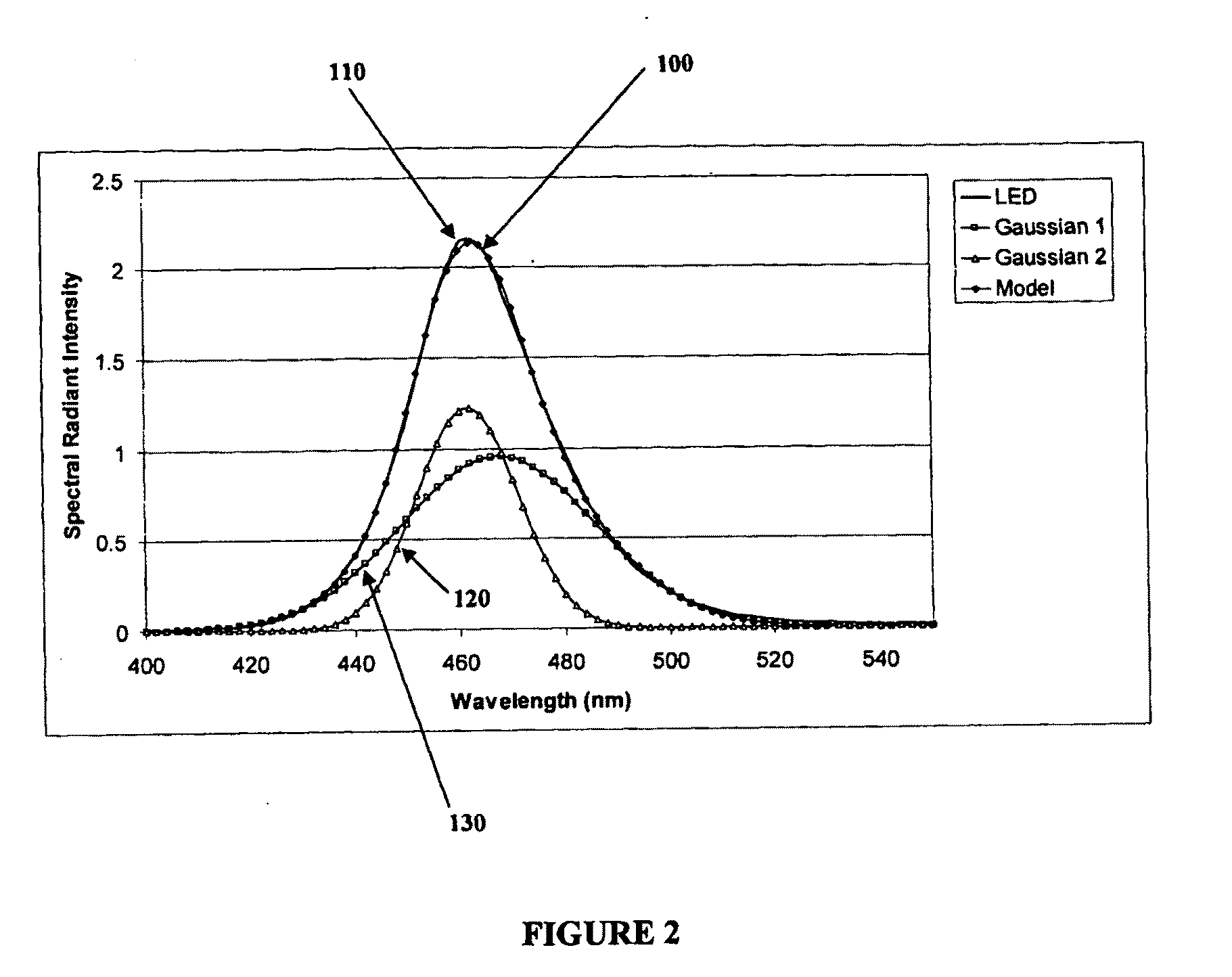Light source intensity control system and method
a technology of intensity control system and light source, applied in the field of illumination, can solve the problems of undesired effects in the spectral power distribution, affecting the intensity control system of led-based light sources in a complex way, and complex compensation of this
- Summary
- Abstract
- Description
- Claims
- Application Information
AI Technical Summary
Benefits of technology
Problems solved by technology
Method used
Image
Examples
examples
[0080]A light source configured according to an embodiment of the present invention, was tested in order to evaluate the functionality of the light source. This embodiment of the light source comprised a defined LED cluster, a sensing device and a control system including a temperature-modified spectral radiant intensity model for each colour of LED. This light source was allowed to thermally stabilize at its respective full intensity and the CCT of the emitted light was set at 3000 Kelvin by adjusting the LED drive currents. Subsequently the LED cluster was de-energized and placed in an environmental chamber for cooling the PCB and attached heat sink to −10° C. The LED cluster was then energized and chromaticity measurements were performed as the temperature of the heat sink stabilized. The respective CCTs and CCT deviations at each temperature are shown in Table 4. In this table, the “CCT Δuv” values represent the deviation from 3000 K along the blackbody locus (corresponding to t...
PUM
 Login to View More
Login to View More Abstract
Description
Claims
Application Information
 Login to View More
Login to View More - R&D
- Intellectual Property
- Life Sciences
- Materials
- Tech Scout
- Unparalleled Data Quality
- Higher Quality Content
- 60% Fewer Hallucinations
Browse by: Latest US Patents, China's latest patents, Technical Efficacy Thesaurus, Application Domain, Technology Topic, Popular Technical Reports.
© 2025 PatSnap. All rights reserved.Legal|Privacy policy|Modern Slavery Act Transparency Statement|Sitemap|About US| Contact US: help@patsnap.com



